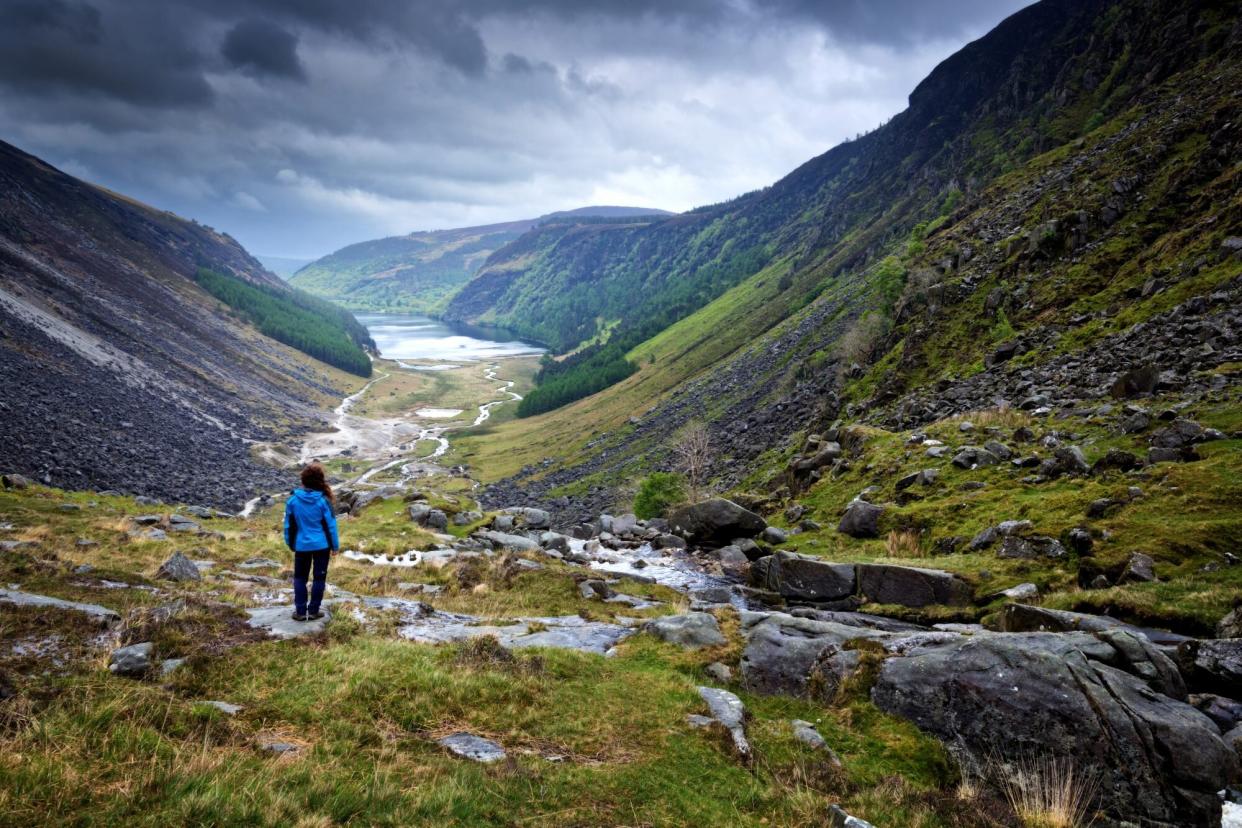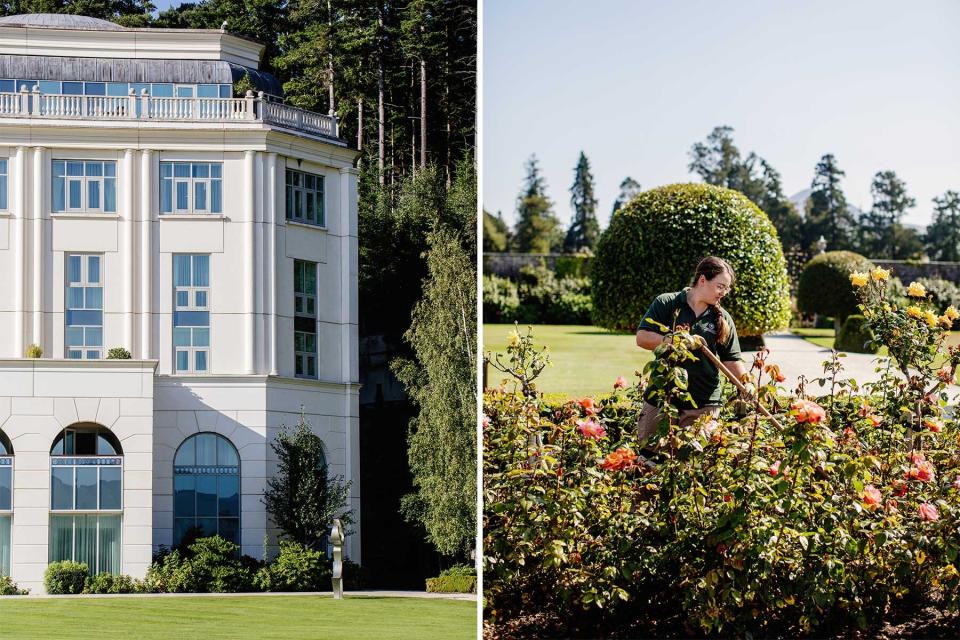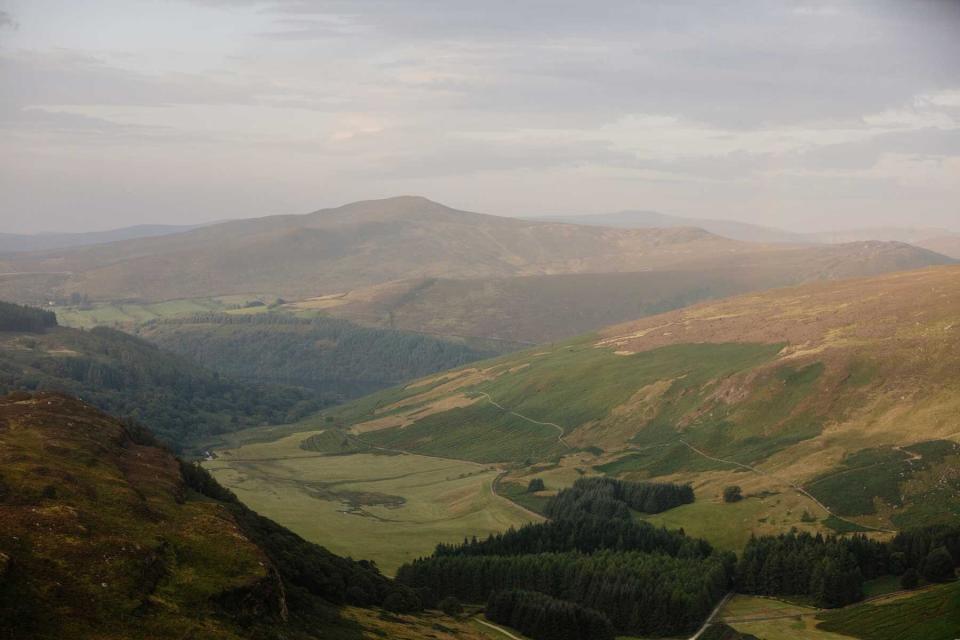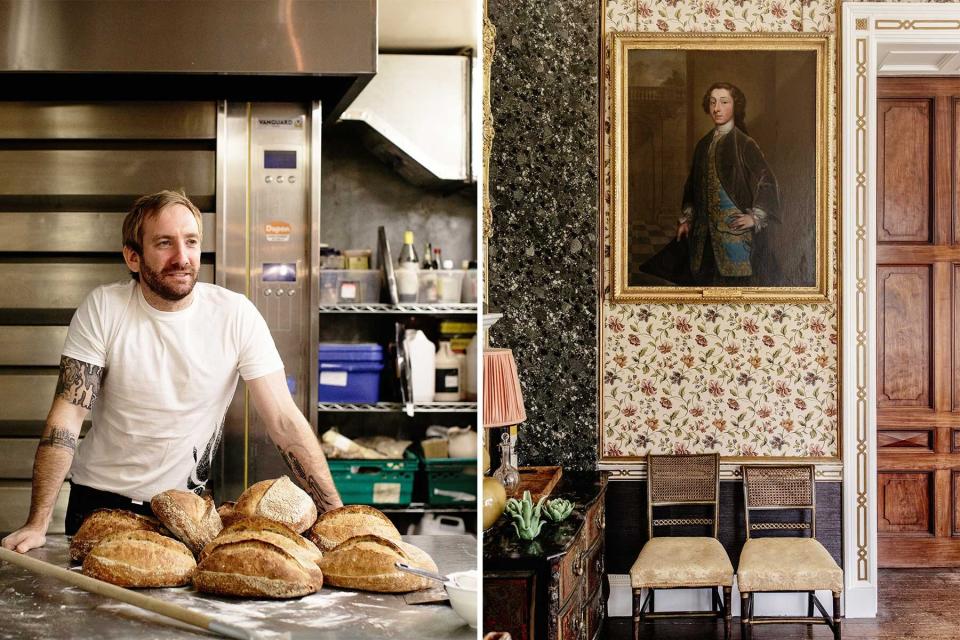This Mountainous Region in Ireland Has Moody Moors, Thundering Waterfalls, and Medieval Monasteries

Anna Gorin/Getty Images
The rest of Europe was suffering a midsummer heat wave, but on the Irish coast there were cool gray skies, soft rain, and bursts of sunlight on heathered hills. As I drove south from Dublin with my teenage sons, Matt and Felix, the sea was pewter and calm. We had just moved from England to Ireland and were on our way to explore Wicklow Mountains National Park, which is less than an hour from the city and has been a playground for Dubliners since it was established in 1991. County Wicklow, known as the Garden of Ireland, is rich in locally grown food, and has mountains, moorland, and fertile valleys perfect for hiking, although most international visitors stay on the roads.
Wicklow is also where many Anglo-Irish families lived before the country gained independence in 1921. Several of the grand houses and gardens from those years are now open to the public. We stayed near Enniskerry at the Powerscourt Hotel Resort & Spa (doubles from $392), a modern building beside the 18th-century Powerscourt House. The grounds — a good day trip if you're staying in Dublin — include a Japanese garden in shades of Irish green, a collection of trees from all over the world, and a rose garden, which, on our visit, was heavy with bloom and heady with scent.
Powerscourt Estate stretches from the foothills of the Wicklow Mountains down to a deep river. The hotel's design gestures toward a traditional Irish house in that it's built into a hillside, and the common areas offer views across the valley toward the mountains. Our suite of rooms overlooked the hotel gardens. I opened the windows to hear the song of woodland birds, wind in the trees, and a tinkling fountain.

Al Higgins From left: Powerscourt Hotel Resort & Spa, built on the grounds of an 18th-century estate; tending the gardens at Powerscourt Estate, which were designed in the mid 19th century.
We set off to investigate, walking past the great façade of Powerscourt House and along a lane that curved down to the river between towering oak and beech trees. The river was limpid, whiskey-colored; the trees, in full summer leaf, met overhead. Felix, who has been trying to see otters all his life, crouched, gestured for silence, waited as fish rose and kissed the air and the odd green leaf twirled down. Not this time.
We returned to swim in the black-tiled pool on the hotel's lowest floor, set deep in the hill, a windowless room starred with crystal lights. We swam, bickered cheerfully over who would get to use the rainfall shower first, dressed, and went to dinner.
Sika, the hotel restaurant, opens onto a terrace, and we sat outside, at treetop height, looking through branches toward the mountains. In August, the sun sets slowly at this latitude, and we found we'd timed dinner perfectly. I was expecting conventional hotel dining, so was pleasantly surprised by my smoked salmon appetizer, a delicately flavored brick of fish, and a pea purée that tasted of summer. Matt's mozzarella wobbled like a good panna cotta and came with tomatoes that had never seen a fridge, as well as basil oil with a scent that had Felix reaching across the table with his bread. The hills and trees were fading into dusk by the time we went to our very comfortable beds.

Al Higgins Ireland’s Wicklow Mountains National Park takes in nearly 80 square miles.
Only the promise of breakfast persuaded 13-year-old Felix to get out of bed early enough for the day's hiking. We were going to walk a section of the Wicklow Way, a 79-mile trail that begins in suburban Dublin and winds southwest through the mountains to Clonegal in County Carlow. Studying the map, I'd spotted an interesting addition: a route that climbs the hills of Kanturk and Scarr before picking up the trail to the famous seventh-century monastic settlement of Glendalough.
Our driver dropped us off by a wooded lane that passed hill farms and rose to heathland. There we entered the national park and followed a path that traced an escarpment above a dark lake. The Wicklow Mountains are dramatic but, in fact, small-scale, giving the pleasing impression of altitude and distance without requiring great effort. High moorland and peaks rose around us; fertile valleys, woods, and water fell away at our feet. We followed the path around the curve of Kanturk, then crossed boggy ground over the pass to Scarr. There was a little rain, a little sun, and scudding clouds. From the top of Scarr we could see right over the Irish Sea to the Welsh mountains visible above the earth's curve. Over there's home, said Felix. Old home, Matt corrected. There were no other people, only ravens flying sometimes below us, sometimes companionably by our side, and sheep grazing the turf, unmoved by our presence.
We descended, pausing for a damp picnic in the shelter of a stand of pines before picking up the Wicklow Way. The trail wove between small farms, old pine plantations, and newer plantings of native deciduous trees, down to the village, where there are a couple of inns and cafés and the remains of Glendalough's medieval monastery. Its tower still stands, and the graveyard holds the dead of the past 1,300 years. We wandered, reading the epitaphs, imagining a millennium of local lives.

Al Higgins From left: Owner Patrick Ryan at the Firehouse Bakery, in Delgany; a portrait in Killruddery’s dining room of William Brabazon, a member of the family that has owned the estate since 1618.
The next morning our driver took us to the trailhead in Knockree, where we joined the Wicklow Way again, descending steeply through sweet-smelling bracken to the river Dargle. The shade under the trees was thick with flies, and we saw fish rising to the surface, but still no otters. We climbed through pine forest and out onto moorland again. There, the hillside curved west above Powerscourt Waterfall, which, at nearly 400 feet, is one of Ireland's tallest. From across the valley we had a raven's-eye view of cars and visitors, ant-size, and ahead of us the peak of Djouce, an easy climb offering spectacular views of Dublin Bay. The Wicklow Way crosses Djouce's shoulder, and we hesitated at the turnoff to the top. Too windy, said Felix, but he was outvoted. Up we went, and watched the weather blowing in from Wales.
The following day we drove to the Firehouse Bakery and the adjacent Delgany Grocer, in the tiny town of Delgany, to pick up provisions for a picnic (including local cheese, the Wexford strawberries we had learned to buy whenever we saw them, the first of the season's apples, and some doughnuts too good to leave). Then we explored another famous estate, Killruddery, still the home of the earl and countess of Meath. Whereas Powerscourt's gardens display the imperial taste of their 19th-century owners, Killruddery, equally beautiful, is filled with Irish flowers, trees, and organic heritage fruits and vegetables — different visions of the modern purpose of these grand estates. From Killruddery's herb garden, we looked back toward the mountains, where larks had risen, singing, from the heather as we walked.
A version of this story first appeared in the August 2022 issue of Travel + Leisure under the headline Garden Leave.

